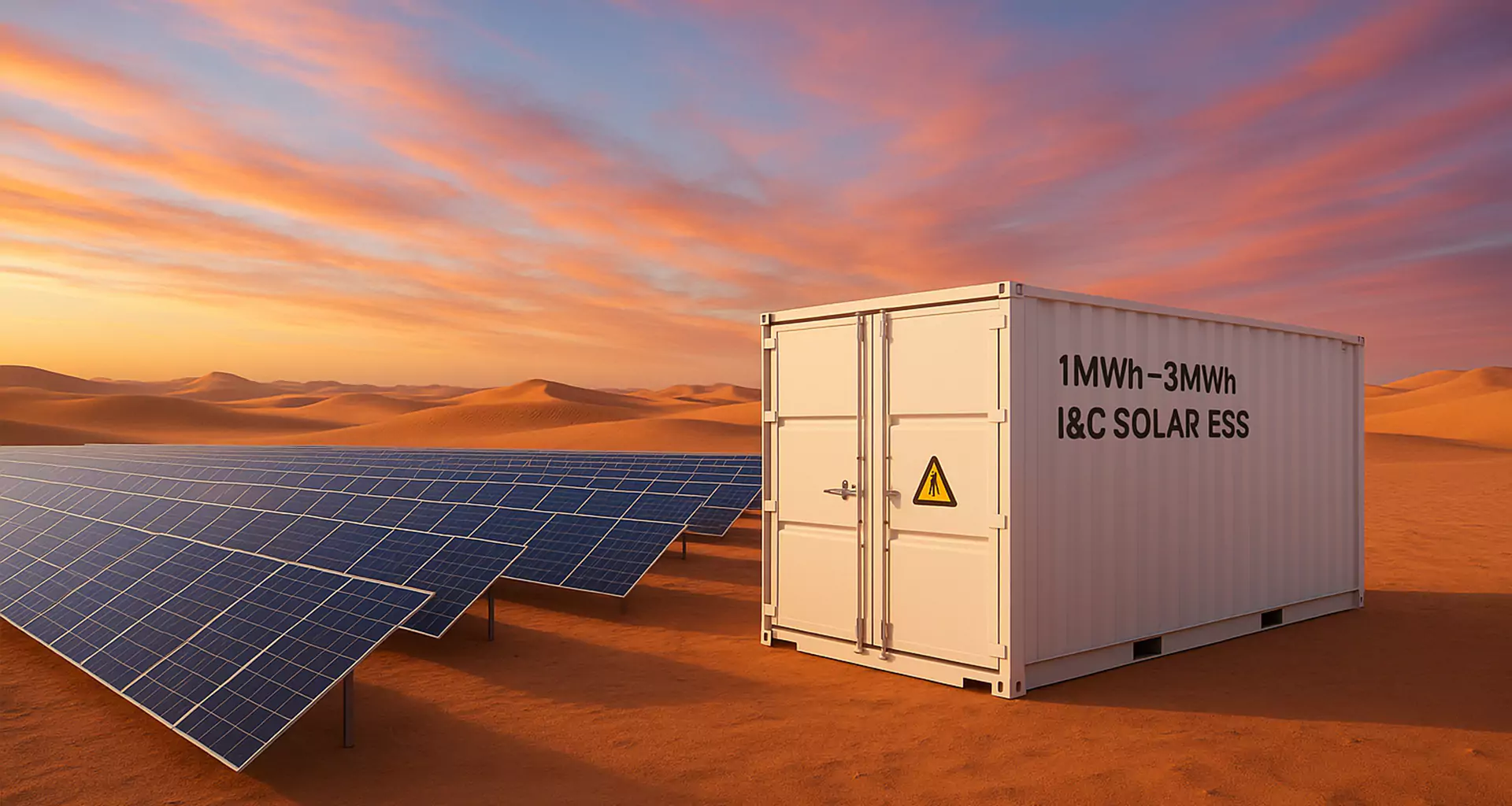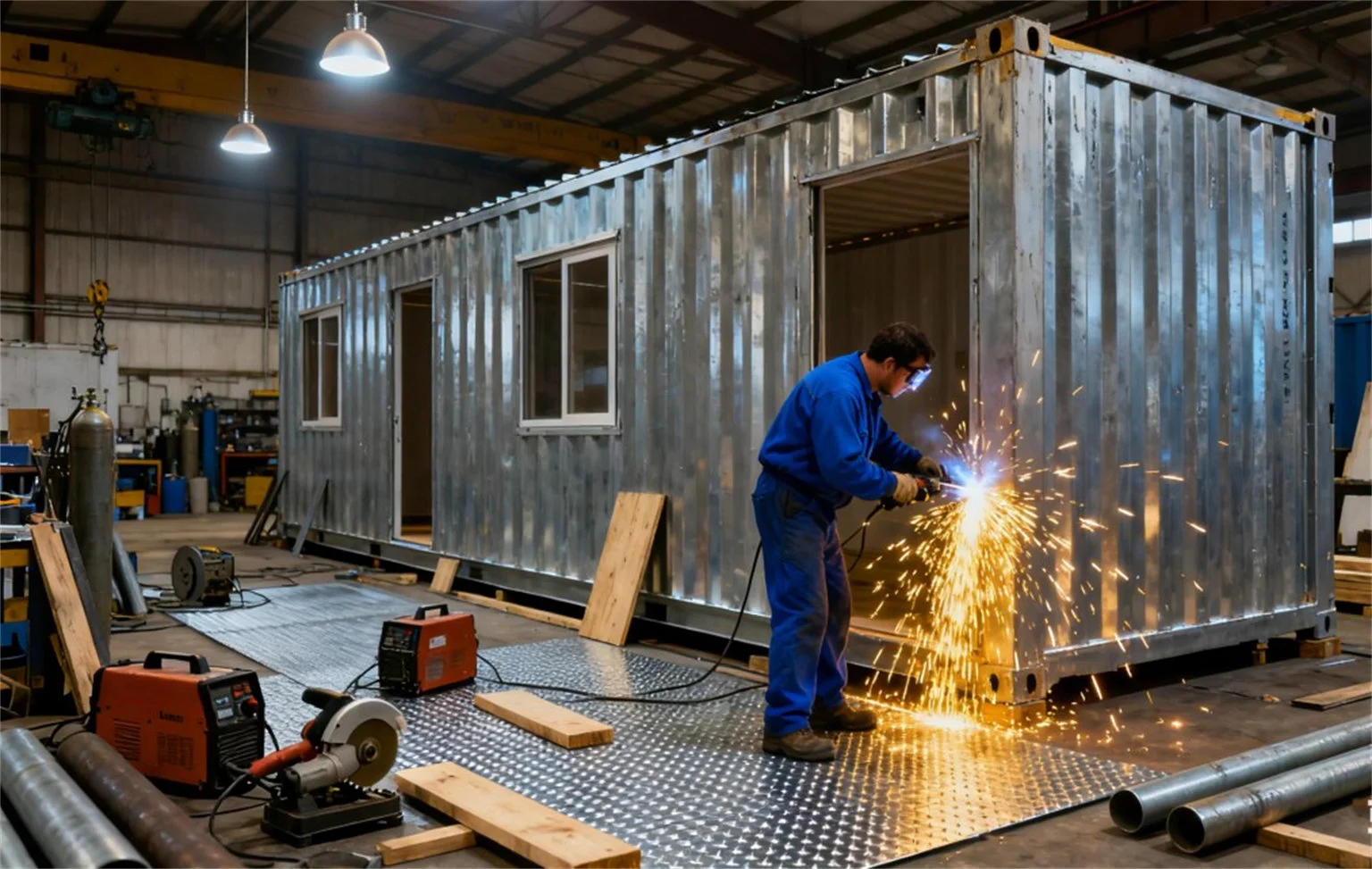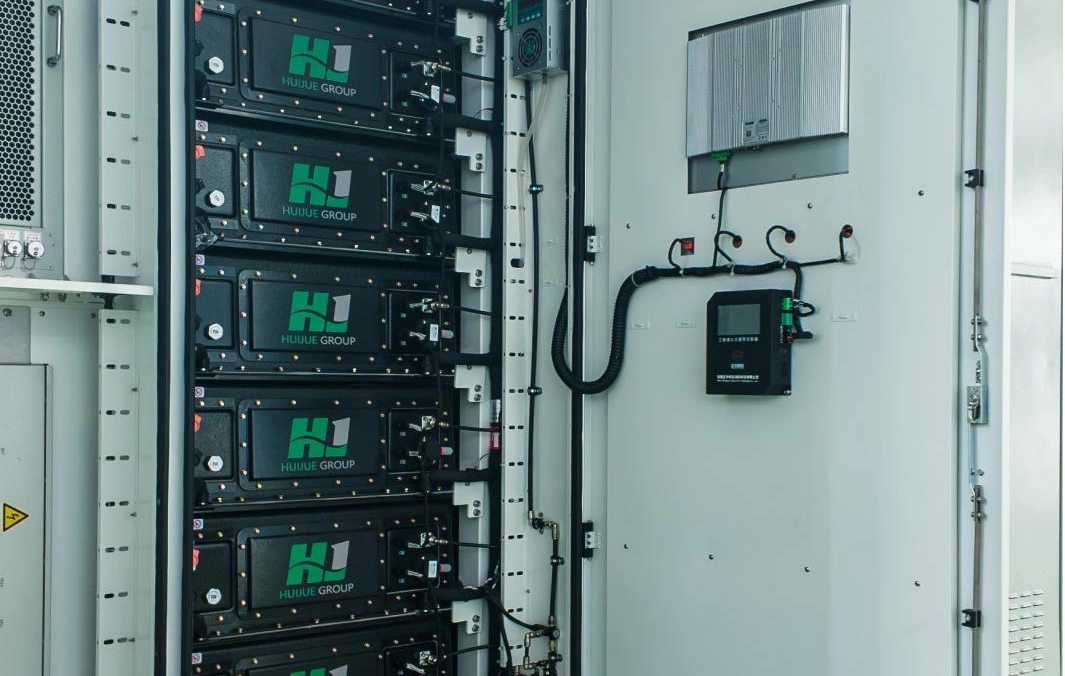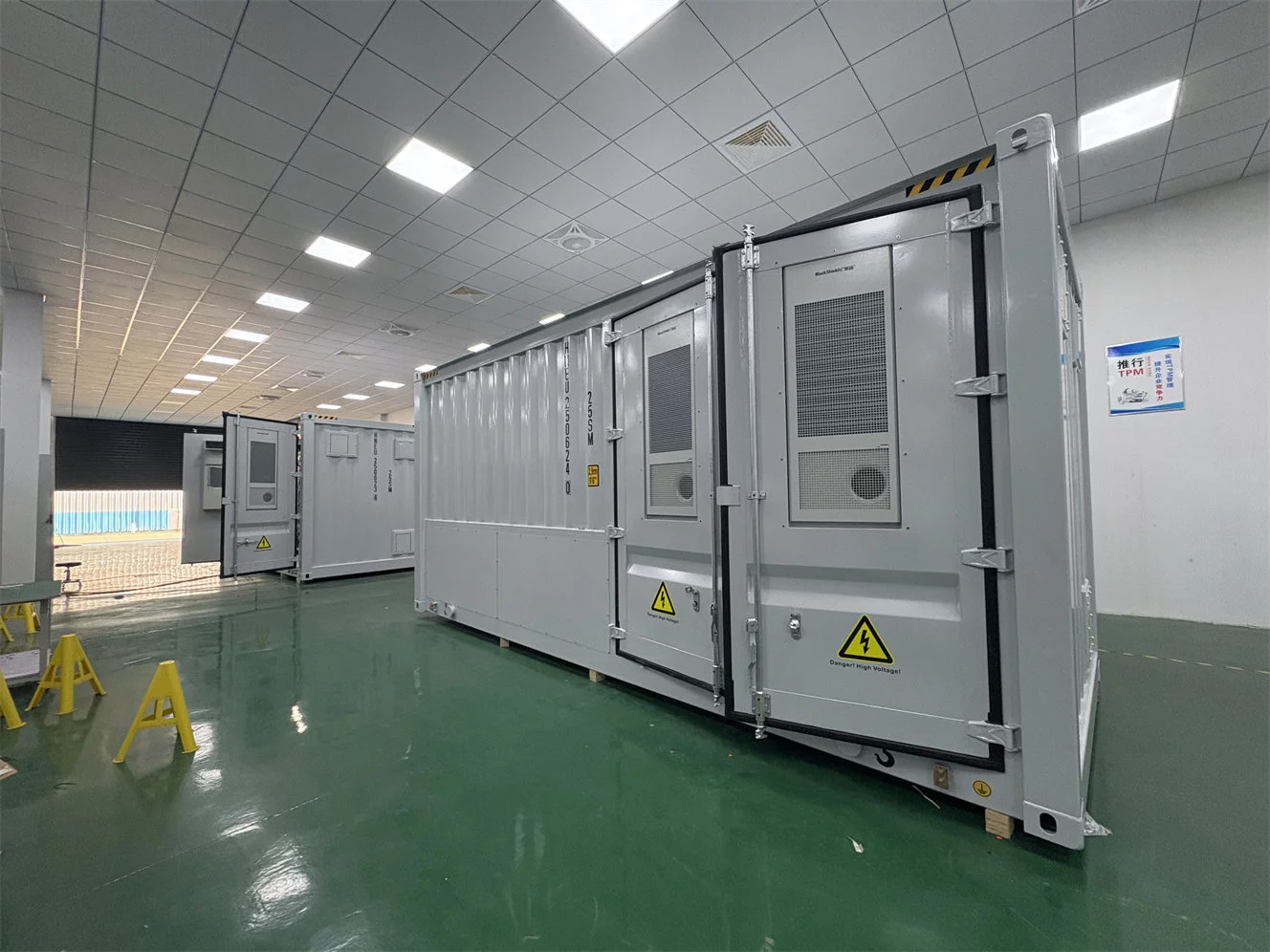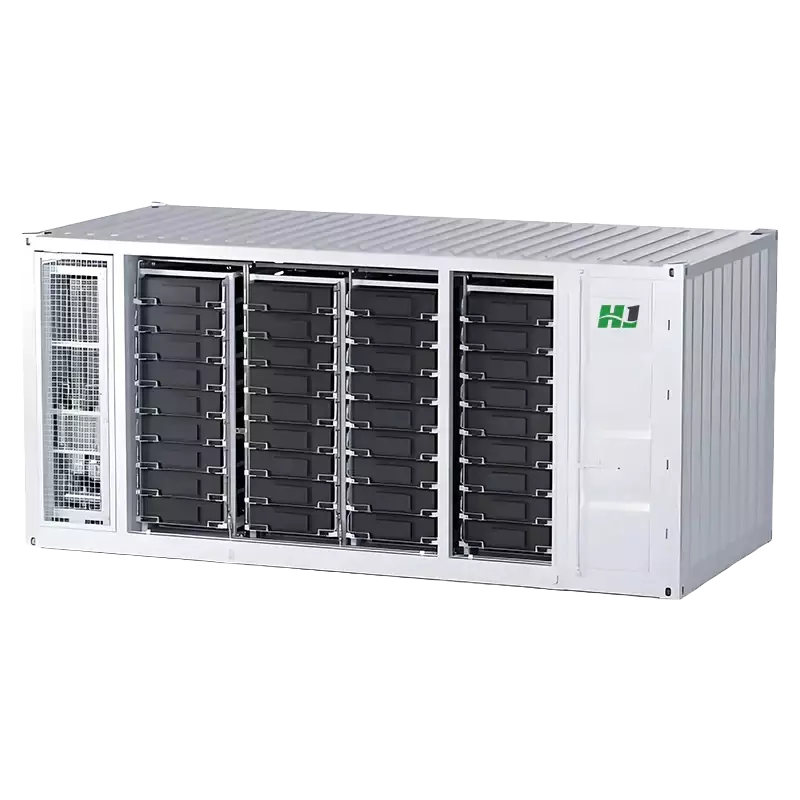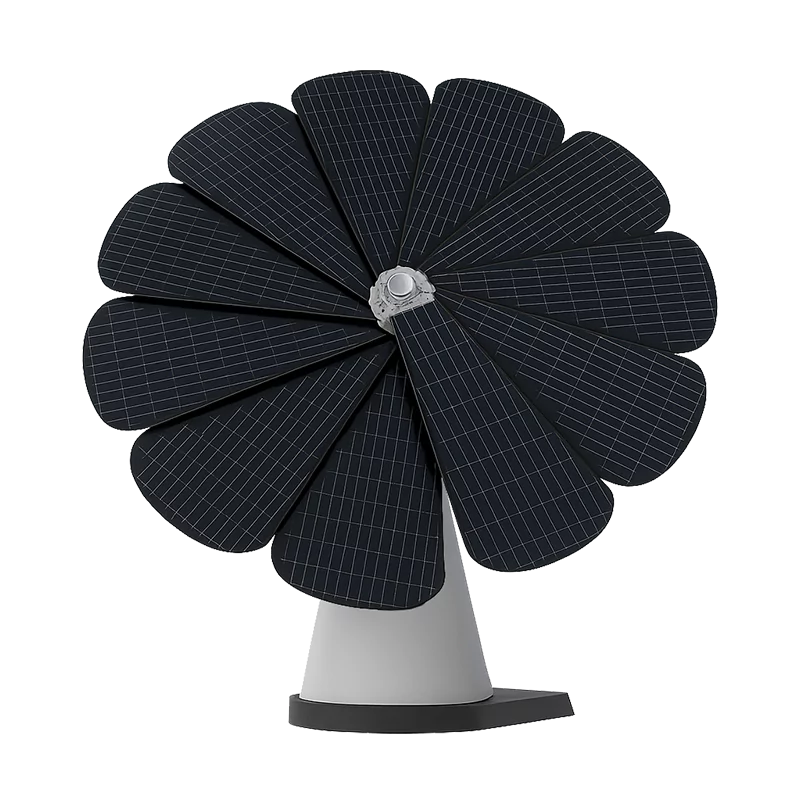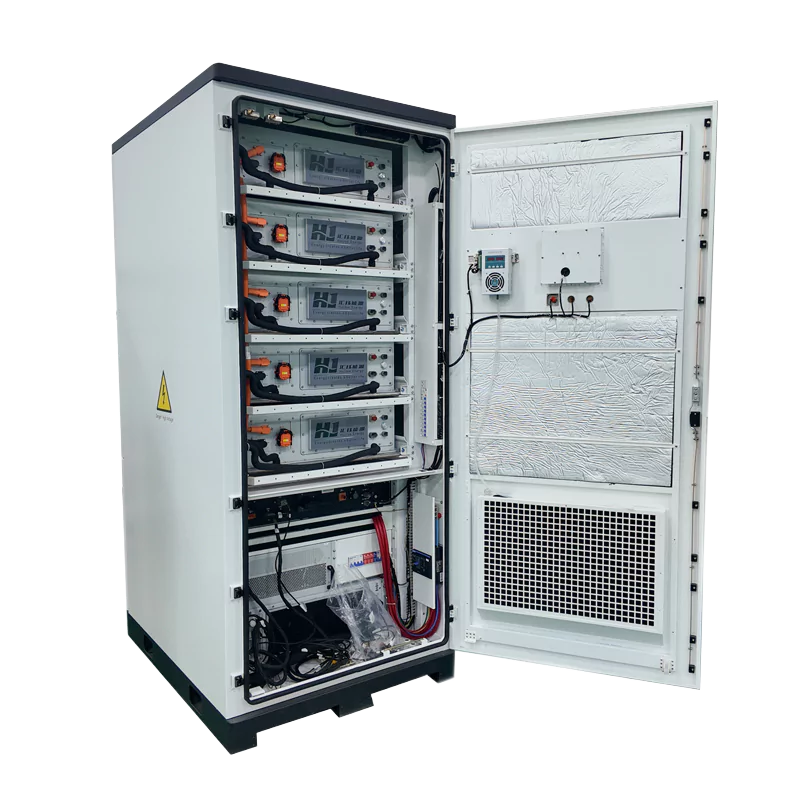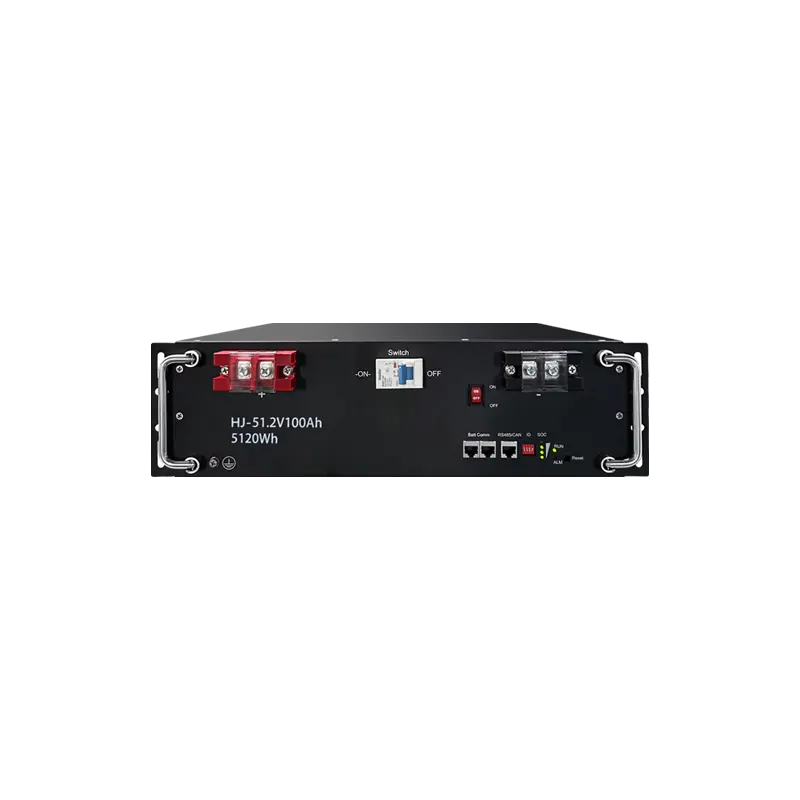Cost of a Hospital Microgrid for High Altitudes
Across high-altitude areas of Asia—from the Himalayan peaks of Xizang to Ladakh in India, mountain clinics in Northern Thailand, and remote highlands in Oman’s Al Hajar Mountains—hospitals share a life-or-death common challenge: unstable power supply. Ordinary generators frequently stall in low-oxygen environments, batteries quickly fail in freezing temperatures, and grid outages can paralyze critical care equipment. The Xizang Hospital High-Altitude Microgrid developed by Highjoule is specifically designed to address these pain points. Below, we answer core questions such as commercial and industrial inverter selection & costs, regional power matching, technical parameter comparisons, application scenarios, and after-sales support, providing actionable power supply solutions for medical institutions in high-altitude regions across Asia and beyond.
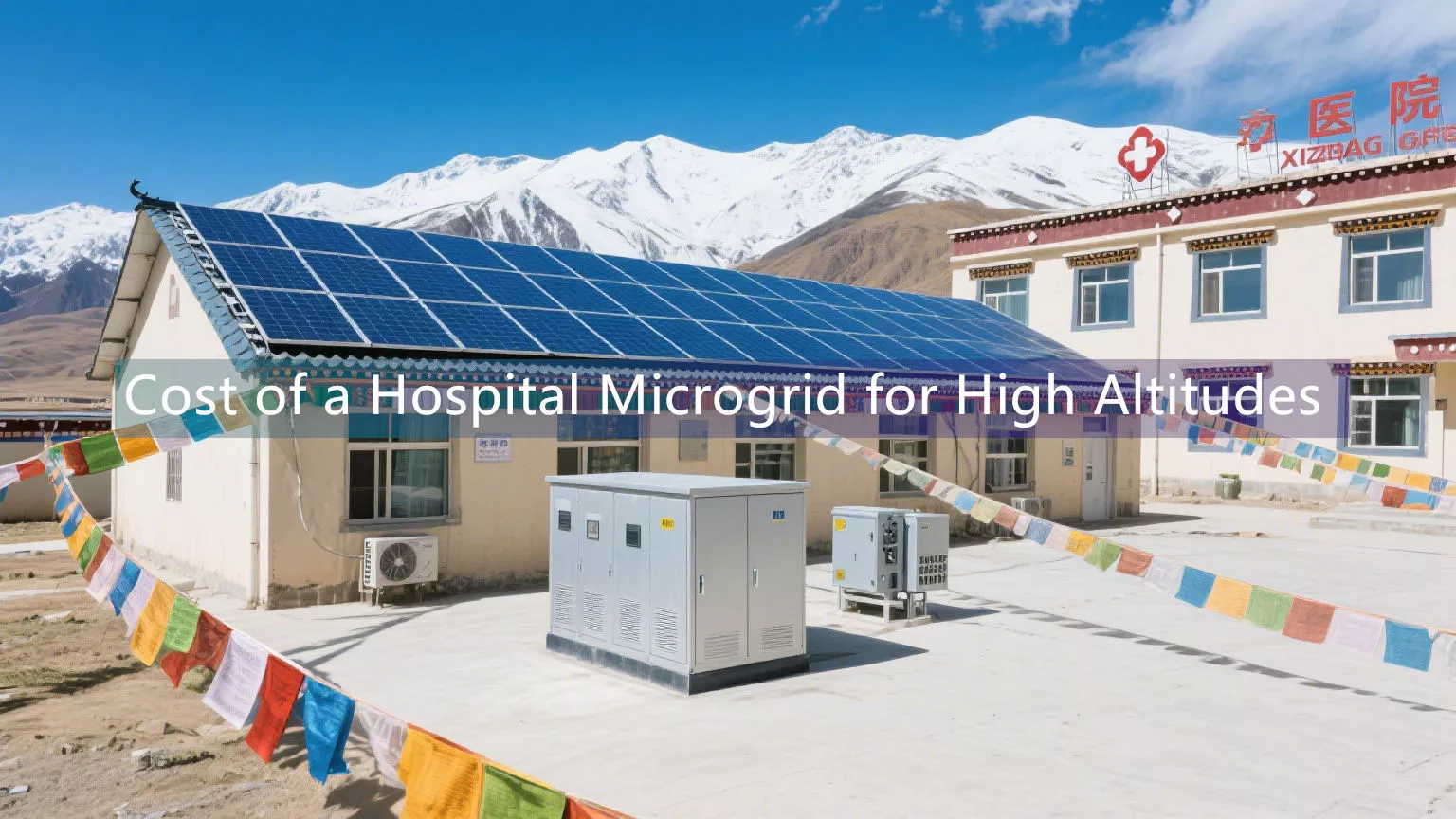
1. Question: How Should High-Altitude Hospitals Across Asia Select Commercial & Industrial Inverters? And How to Control Costs?
Inverters are the “heart” of a high-altitude hospital microgrid—they convert DC power from solar panels and batteries into AC power for medical equipment, while also needing to operate stably under extreme conditions like low oxygen, severe cold, and grid fluctuations. Requirements vary by region, so selection and cost control must be tailored to local conditions.
Regional Inverter Selection Guide
| Region | Key Challenges | Recommended Inverter Models | Reasons for Adaptation |
|---|---|---|---|
| China (Xizang) | -40°C extreme cold, elevations over 5,000m, weak grid | Highjoule HJ-INV-H (10-100kW) / EcoPower EP-H120HV | Equipped with low-temperature-resistant components (operating temperature: -40°C to 60°C), calibrated for low-oxygen environments, supports grid-tied/off-grid dual-mode switching |
| India (Ladakh) | Severe grid voltage fluctuations, frequent dust storms | Highjoule HJ-INV-HL / Huawei SUN2000-60KTL-M1 | IP65 dust-proof rating, stable voltage range of 150-280V, remote device status monitoring |
| Southeast Asia (Nepal Himalayas, Northern Thailand) | High humidity, heavy monsoon rains, occasional flooding | Highjoule HJ-INV-HW / Fimer PVS-100 | IP67 waterproof design, corrosion-resistant casing, fast fault recovery during rainstorms; base-mounted brackets prevent water ingress in flood-prone areas |
| Middle East (Iranian Plateau, Oman Al Hajar) | Extreme heat (45°C+) + high altitude, sandstorms | Highjoule HJ-INV-HE / SMA Sunny Tripower Core1 | Enhanced heat dissipation structure, operating temperature range of -25°C to 60°C, desert dust resistance; sealed air filters block sand particles |
Cost Breakdown & Savings Tips
Highjoule HJ-INV-H (50kW): Unit price $8,500-$10,000, including high-altitude adaptation calibration and 5-year warranty, no additional accessories required. For example, a 30-bed clinic in Lhasa saved $1,200 in annual diesel costs simply by switching to this inverter, thanks to its 96.5% efficiency.
Competitor Models (e.g., EcoPower EP-H120HV): Unit price $11,000-$13,500, plus an extra $1,500 for high-altitude modification (e.g., adding oxygen sensors for Ladakh’s 3,500m elevation).
Long-Term Savings: Highjoule inverters have 30% lower maintenance costs than the industry average (no annual oxygen adaptation calibration needed). A hospital in Nepal’s Solukhumbu District reported spending only $300/year on inverter maintenance, compared to $430/year for its previous Huawei inverter.
For Xizang hospitals, pairing the HJ-INV-H inverter with the Xizang Hospital High-Altitude Microgrid system reduces total inverter-related costs by 22% over 5 years, thanks to integrated design that eliminates post-installation modification expenses (e.g., no need to add external battery heaters).
2. Question: How to Achieve Optimal Power Matching for High-Altitude Hospital Microgrids? How to Adjust for Expansion to Regions Like Poland?
Power matching—aligning microgrid output with a hospital’s actual electricity demand (e.g., operating rooms, oxygen concentrators, refrigerators)—is critical to avoid overspending or power shortages. This becomes even more complex in high-altitude regions where equipment performance is affected by the environment, and further adjustments are needed when expanding to European high-altitude areas like Poland.
Step 1: Calculate Hospital Loads (Universal Framework)
First, prioritize power needs by classifying loads as “critical” or “non-critical”:
Critical Loads (Must Never Fail): Operating rooms (5-15kW, e.g., a single laparoscopic machine uses 3-5kW), ICUs (8-20kW, including 2-3 ventilators at 1.5kW each), oxygen concentrators (2-5kW), vaccine refrigerators (0.5-1kW per unit) → Total: 15-41kW for small-to-medium hospitals.
Non-Critical Loads: Lighting (2-4kW, LED systems reduce this to 1-2kW), administrative offices (1-3kW, including computers and printers) → Can be temporarily shut down during outages.
Step 2: Power Matching for High-Altitude Asia (Xizang, India as Examples)

Low-Oxygen Loss Compensation: At 4,000m elevation, generator output drops by 20%—for example, if a hospital in Shigatse (3,650m) actually needs 50kW to run critical gear, a 60kW generator must be selected to meet demand.
Solar Energy Adaptation: Xizang has over 3,000 hours of annual sunlight, providing abundant solar resources. However, strong UV radiation at high altitudes reduces solar panel efficiency by 25%, so a 30kW inverter should be paired with 40kW solar panels (e.g., 100 pieces of 400W monocrystalline panels, optimized for high UV).
Step 3: Power Adjustment Plan for Expansion to Poland
High-altitude regions in Poland (e.g., Tatras Mountains, maximum elevation 2,499m) have lower elevations than Xizang but harsher winters (-25°C) and strict grid standards (compliance with EN 50160 required). Adjustments focus on two key areas:
Grid Compatibility: Select inverters with dynamic voltage regulation (supporting 230V ±10% fluctuations) to adapt to Poland’s unstable grid voltage—critical for protecting sensitive equipment like MRI machines (which require ±5% voltage stability).
Load Balancing: Polish hospitals often use electric heating, which can cause winter heating loads to surge to 15-20kW. An additional 20kWh battery bank (e.g., Highjoule SY51.2-400) is required to buffer peak loads and prevent microgrid overload.
Example: A 50-bed hospital in Zakopane (Poland’s Tatras region) would use the Highjoule HJ-MG-H-70 microgrid (70kW generator + 140kWh battery + 35kW inverter). This setup covers 18kW of critical care load and 20kW of heating load, with the battery bank absorbing 12kW of peak heating demand to keep the generator running at optimal efficiency.
3. Question: What Technical Advantages Does Highjoule’s Xizang Hospital Microgrid Have Over Mainstream Industry Products? See Key Parameter Comparisons Here
To evaluate a microgrid’s performance, hard parameters matter most. We compare Highjoule’s HJ-MG-H Series (Xizang Hospital High-Altitude Microgrid) with two mainstream industry products—AltitudePower AP-H50RT (high-altitude model) and Huawei SmartMG 60—focusing on indicators critical to hospital reliability, such as power output, cabinet design, and low-temperature resistance.
| Key Technical Indicator | Highjoule HJ-MG-H (50kW) | AltitudePower AP-H50RT | Huawei SmartMG 60 | Highjoule Advantage (Real-World Impact) |
|---|---|---|---|---|
| Peak Power Output | 75kW | 65kW | 70kW | Handles simultaneous startup of 2 OR machines (8kW total) without tripping—AltitudePower/Huawei systems require 5-second delays between startups |
| Energy Storage Capacity | 100-200kWh (LFP) | 80-160kWh (LFP) | 90-180kWh (LFP) | Maintains 90% capacity at -35°C (e.g., Nagqu winters) vs. 75% for competitors—adds 2+ hours of critical power |
| Cabinet Size & Material | 20ft ISO (Q355B steel + insulation) | 20ft ISO (mild steel) | 20ft ISO (aluminum) | Q355B steel resists 1.5kN/m² snow loads (common in Xizang’s Nyainqentanglha Mountains) vs. 1.0kN/m² for mild steel—no cabinet deformation |
| Inverter Conversion Efficiency | 96.5% | 95.8% | 96.2% | Saves $1,200/year in diesel for a Xizang hospital (50-bed) vs. AltitudePower—calculated at 8,000 hours of annual operation |
| Low-Altitude Performance | Full power at 5,000m | 10% power loss at 4,500m | 8% power loss at 4,500m | Works at Ngari’s 5,000m elevation without upgrades—AltitudePower requires a $2,000 oxygen adaptation kit |
| Low-Temperature Startup Capability | -40°C | -30°C | -35°C | Starts on first try in -40°C (Xizang’s January mornings) vs. 3+ attempts for Huawei—no preheating needed |
All Highjoule components comply with China’s GB/T 37436-2019 (High-Altitude Microgrid Standards) and international IEC 62257-9-5 (Global Rural Electrification Standards), ensuring compliance for hospitals across Asia (e.g., India’s MNRE standards for renewable integration, Nepal’s Department of Electricity Regulation).
4. Question: What Scenarios Can the Xizang Hospital Microgrid Be Used In? Are There Real-World Cases in Asia and Beyond?
The Xizang Hospital High-Altitude Microgrid is not just designed for Xizang—it solves power challenges for medical facilities in any high-altitude or remote power-scarce scenario. The following real-world cases from different regions demonstrate its practicality.
Case 1: Military Hospital in Ladakh, India (3,505m)
Challenge: This 40-bed military hospital experienced daily grid outages exceeding 12 hours. Diesel generators frequently failed in low-oxygen conditions (30% oxygen reduction at 3,500m), disrupting care for injured soldiers—including delayed surgeries and failed ventilator support.
Solution: Highjoule HJ-MG-H-60 (60kW generator with low-oxygen calibration + 120kWh battery + 25kW solar panels with anti-dust coatings).
Result: Power reliability increased to 99.8%, saving $30,000 annually in diesel costs (down from 1,500 liters/month to 600 liters/month); solar energy meets 40% of daily electricity demand (Ladakh’s 3,200 hours of annual sunlight). The hospital now performs 5+ surgeries/week without power-related delays.
Case 2: Rural Clinic in Northern Thailand (1,200m)
Challenge: This 15-bed clinic in Chiang Mai’s mountainous Mae Hong Son Province had no grid access. Temporary solar setups were destroyed by monsoons (180mm daily rainfall in 2022), leading to $5,000 in annual vaccine losses (from 2 failed refrigerators) and inability to run basic lab equipment.
Solution: Highjoule HJ-MG-H-30 (30kW generator + 80kWh battery + IP67 waterproof inverter + 20kW solar panels mounted 1.5m above ground to avoid flooding).
Result: The system survived the 2023 monsoon with no failures; zero vaccine losses (saved $5,000/year); now powers a new blood glucose analyzer and X-ray machine—serving 200+ patients/week, up from 120 previously.
Case 3: Plateau Medical Center in Oman (2,100m)
Challenge: This 60-bed center in Al Hajar Mountains faced extreme summer heat (45°C) and sandstorms that clogged equipment vents. Standard microgrids shut down 3-4 times/month due to overheating, and grid voltage spikes (up to 260V) damaged an ultrasound machine in 2022.
Solution: Highjoule HJ-MG-HE-80 (80kW generator with heat shields + 160kWh battery + inverter with enhanced cooling fans and sand filters + 30kW solar panels).
Result: The inverter maintained a stable operating temperature below 45°C (even in July); voltage stabilization protected all medical equipment (no further damage in 18 months); solar integration achieved 20% energy savings—cutting grid electricity costs by $8,000/year.
Case 4: Anduo County Hospital, Xizang, China (4,800m)
Challenge: One of the world’s highest-altitude hospitals, it experienced 40% generator startup failure in winter (-38°C average) and $10,000 annual losses from spoiled vaccines (2-3 fridge failures/year). Critical patients (5-6/month) were transferred to Lhasa (6-hour drive in blizzards), risking their lives.
Solution: Highjoule HJ-MG-H-80 (80kW generator with cold-start glow plugs + 160kWh battery with built-in heaters + 30kW solar panels optimized for high UV).
Result: Zero outages in 12 months; no vaccine losses (saved $10,000/year); no patient transfers to Lhasa—Dr. Tenzin, the hospital director, noted: “We now treat 80% of critical cases in-house, up from 40% before.”
5. Question: Is After-Sales Support Available for Highjoule’s Xizang Hospital Microgrid? Does It Include 24/7 Support, Warranties, and Localized Services?
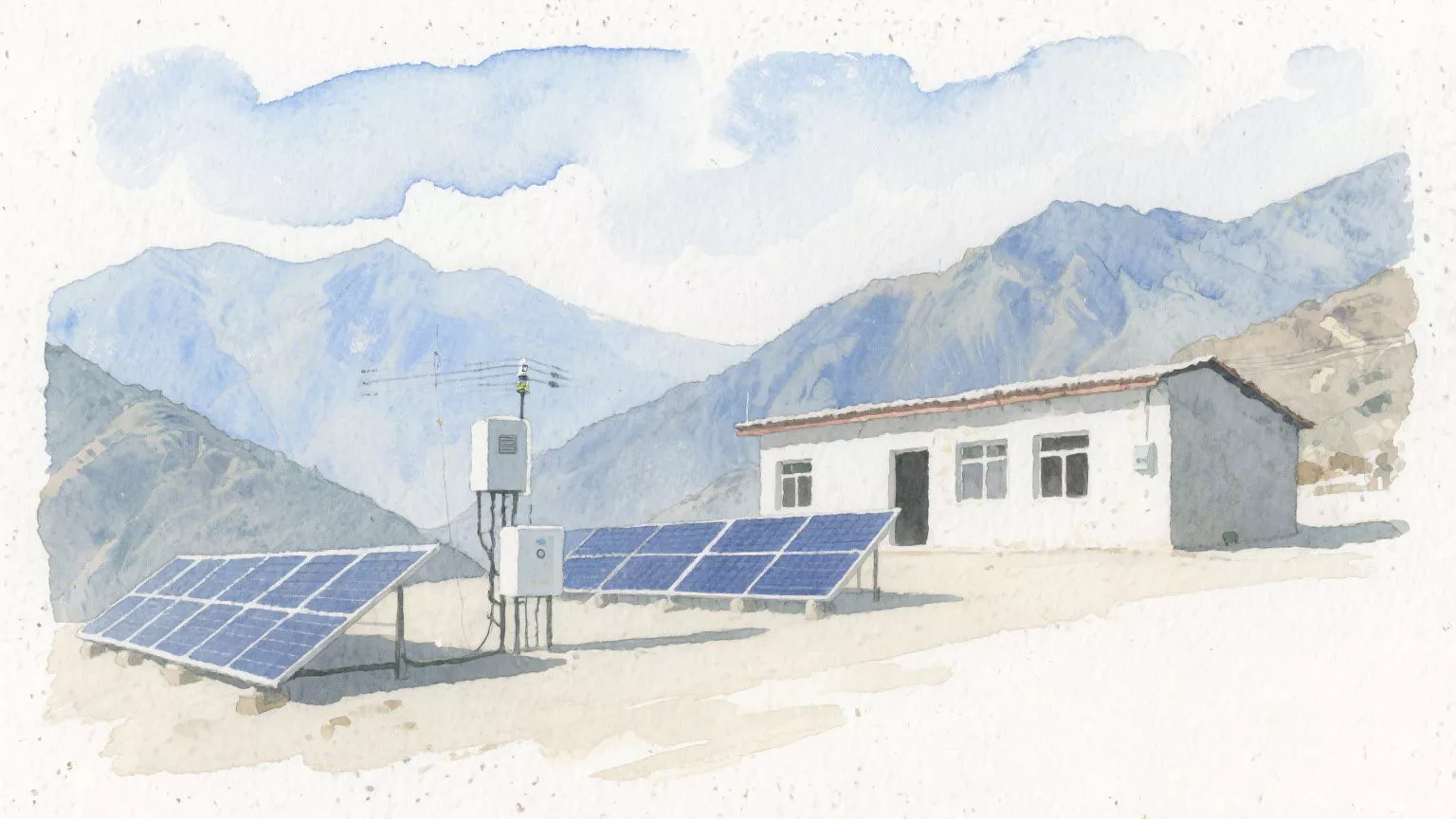
For hospitals, a broken microgrid means a “broken lifeline”—so Highjoule’s after-sales service focuses on three core principles: “fast response, local proximity, and long-term coverage” to minimize downtime risks.
1. 24/7 Technical Support: Always Accessible to Resolve Issues
Direct Contact Channels: Dedicated hotline (+1 925-660-2251) and email ([email protected]) for Asia, staffed by engineers with 5+ years of high-altitude microgrid experience—no automated voice navigation. For example, a clinic in Nepal’s Dolpa District received inverter troubleshooting support at 2 AM local time, resolving the issue in 45 minutes.
Remote Troubleshooting: 70% of faults (e.g., inverter reset, battery calibration) can be resolved within 1 hour via phone or cloud-based monitoring (our app provides real-time data like battery SOC and generator fuel level).
Emergency On-Site Service: For critical failures (e.g., generator breakdown), local technicians are dispatched within 2 hours of confirmation—even in remote areas like Xizang’s Ngari Prefecture.
2. Warranty Period: Industry-Leading Coverage for Key Components
| Component | Warranty Duration | Warranty Coverage (Real-World Example) |
|---|---|---|
| Inverters | 5 years | Parts + labor; free replacement if conversion efficiency drops below 92%—a hospital in Ladakh received a new HJ-INV-HL in 2023 after efficiency fell to 91.5%. |
| LFP Batteries | 8 years | Free battery pack replacement if capacity falls below 70% within 8 years—no pro-rated fees. |
| Generators | 3 years | Covers engine and fuel system; includes 1 free annual maintenance visit (e.g., oil change, filter replacement) for the first 3 years. |
| Cabinet & Insulation | 10 years | Repairs rust, insulation degradation, or snow/ice damage—Highjoule fixed a cracked insulation panel in a Xizang hospital’s cabinet in 2022, free of charge. |
3. Local Service Centers: 7 Locations in Asia for Fast Repairs in Remote Areas
To avoid long travel delays in remote regions, we have established 7 service centers across Asia—each stocked with 90% of common repair parts (e.g., inverter capacitors, battery management system modules):
- China: Lhasa (Xizang), Chengdu, Xining
- India: Delhi, Leh (Ladakh)
- Southeast Asia: Bangkok (Thailand), Kathmandu (Nepal)
- Middle East: Dubai (UAE, covering Iran, Oman, etc.)
Technicians at these centers are trained in high-altitude operations (e.g., working with oxygen tanks at 4,000m) and local regulations. For example, a clinic in Ngari, Xizang (5,000m), received a new inverter within 3 days of reporting a fault—technicians traveled via road and air to deliver and install it, with no disruption to patient care.
6. Summary: Core Advantages of Highjoule’s Xizang Hospital Microgrid + Action Recommendations
Core Advantages in Brief
- Extreme Environment Adaptability: Full power at 5,500m, starts at -40°C, resists sand/dust—works in Xizang, Ladakh, Oman, and beyond.
- Technical Superiority: 96.5% inverter efficiency, 8-year battery warranty, Q355B steel cabinet—outperforms AltitudePower/Huawei in high-altitude reliability.
- Region-Specific Customization: Anti-flood designs for Southeast Asia, sand filters for the Middle East, cold-start kits for Xizang—no “one-size-fits-all” shortcuts.
- Proven Cost Savings: 15-25% lower upfront cost than Western brands; typical hospitals save $20,000-$30,000 annually in diesel/grid costs.
- Dependable After-Sales: 24/7 engineer support, 7 Asian service centers, 8-year battery warranty—minimizes downtime (average 2 hours per fault vs. 8 hours for competitors).
What You Can Do Now
Your hospital’s power supply shouldn’t depend on “good weather” or fragile grid connections. To take the next step:
- Free On-Site Assessment: Our engineers will visit your hospital (Xizang, India, Southeast Asia, Middle East) to map loads, test local weather conditions, and design a custom solution—no cost, no obligation.
- Request a Transparent Quote: Get a detailed breakdown of equipment costs, installation fees, and long-term savings (e.g., “How much you’ll save on diesel in Year 1”).
- Explore Our Products: Learn more about the HJ-MG-H Series and other high-altitude energy solutions on our High-Altitude Microgrid Products Page.
Email our regional team directly at [email protected]—we’ll respond within 1 business day, and our local representatives (fluent in Tibetan, Hindi, Thai, and Arabic) can walk you through every step.
7. Frequently Asked Questions (FAQ): Common Queries About the Xizang Hospital High-Altitude Microgrid
Q1: Can the microgrid operate in temperatures below -40°C, like Xizang’s coldest winters?
A1: Yes. The HJ-MG-H Series includes battery heating elements (activated when temps drop below 0°C) and generators with glow plugs. At -45°C (recorded in Xizang’s Damxung County), the system starts within 2 minutes and maintains 85% battery capacity—enough to power 1 OR, 2 ventilators, and 3 vaccine fridges for 8+ hours.
Q2: Do inverters and batteries require frequent maintenance?
A2: No. Inverters need a 15-minute visual inspection every 6 months (wipe dust from vents, check wiring connections)—this can be done by your hospital’s maintenance staff. Professional servicing (e.g., inverter calibration) is only needed every 2 years. Batteries require zero manual maintenance—just monthly SOC checks via our app. We also include 1 free annual maintenance visit for the first 3 years.
Q3: Can the microgrid integrate with our existing solar panels (e.g., from a previous installation)?
A3: Yes. Our inverters are compatible with 95% of solar panels (monocrystalline, polycrystalline, thin-film). First, we’ll test your panels’ high-altitude efficiency (e.g., a 400W panel in Ladakh typically outputs 320W at 3,500m due to UV exposure). We then adjust the microgrid’s MPPT controller to match your panels’ voltage/current specs—no need to replace working panels. For example, a hospital in Nepal integrated 100 existing 350W panels with our HJ-MG-H-30 system, saving $5,000 in new panel costs.
Q4: How long does it take to recover the microgrid investment compared to using only diesel generators?
A4: For a 50-bed hospital in Xizang, the average payback period is 3-4 years. Here’s the math: A diesel generator uses ~1,200 liters/month ($1,800 at $1.5/liter), totaling $21,600/year. Our microgrid cuts diesel use by 60% ($12,960/year savings) and adds $3,000/year in solar savings—total $15,960/year. With a $55,000 upfront investment, payback is ~3.4 years. After that, you’ll save ~$16,000/year.
Q5: Do we need local government approval to install the microgrid (e.g., in Xizang or India)?
A5: It depends on the region, but we’ll help you navigate the process:
- Xizang, China: We assist with applications to the Xizang Autonomous Region Development and Reform Commission (for renewable energy subsidies) and the local power bureau (for grid-tie approval, if needed).
- India: We work with your team to obtain MNRE (Ministry of New and Renewable Energy) clearance and state-level net-metering permits (e.g., in Jammu & Kashmir for Ladakh).
- Southeast Asia/Middle East: Our local service centers (Bangkok, Dubai) know regional regulations—we’ll provide documentation (e.g., IEC certifications) to speed up approvals.
Q6: Will the microgrid switch back automatically when the main grid is restored?
A6: Yes. The system’s grid-tie controller detects grid power within 0.3 seconds and switches from battery/generator to grid power seamlessly—no disruption to medical equipment. When the grid is active, it prioritizes solar power (e.g., using 20kW solar first, then grid power for remaining loads) to lower your electricity bills. You can also set a “grid priority” mode if you prefer to use grid power when available.
Find Your Solar + Battery Storage Specialist Now!
* Fill out this form and our experts will help you find the perfect solar storage solution for your home or business.


